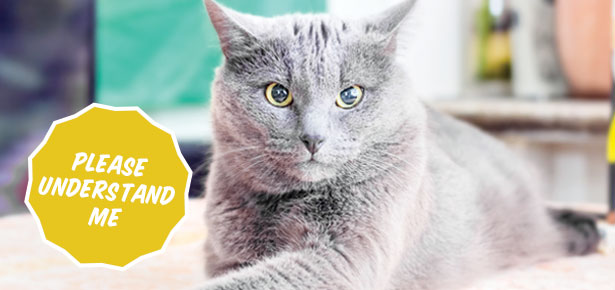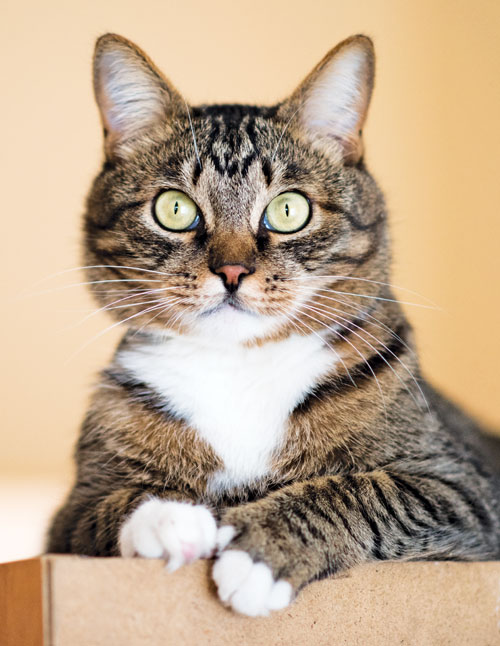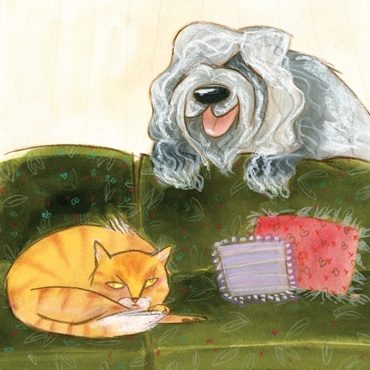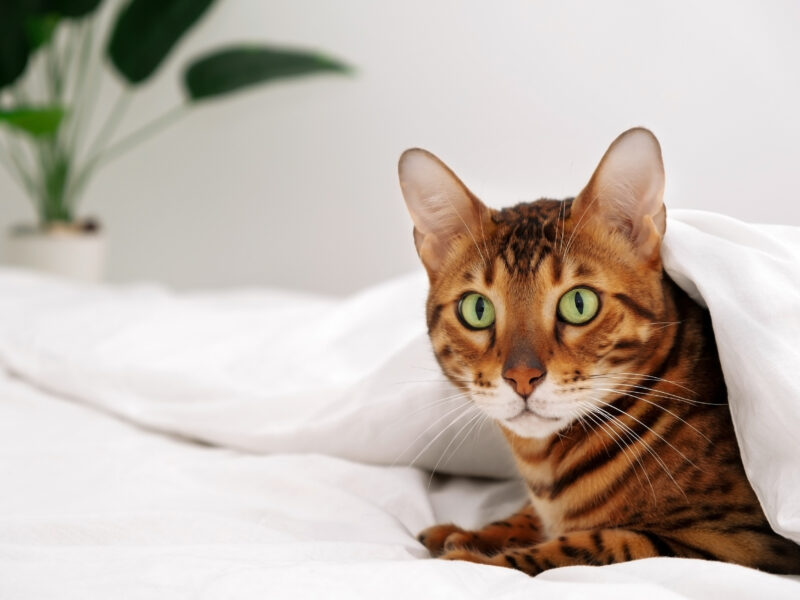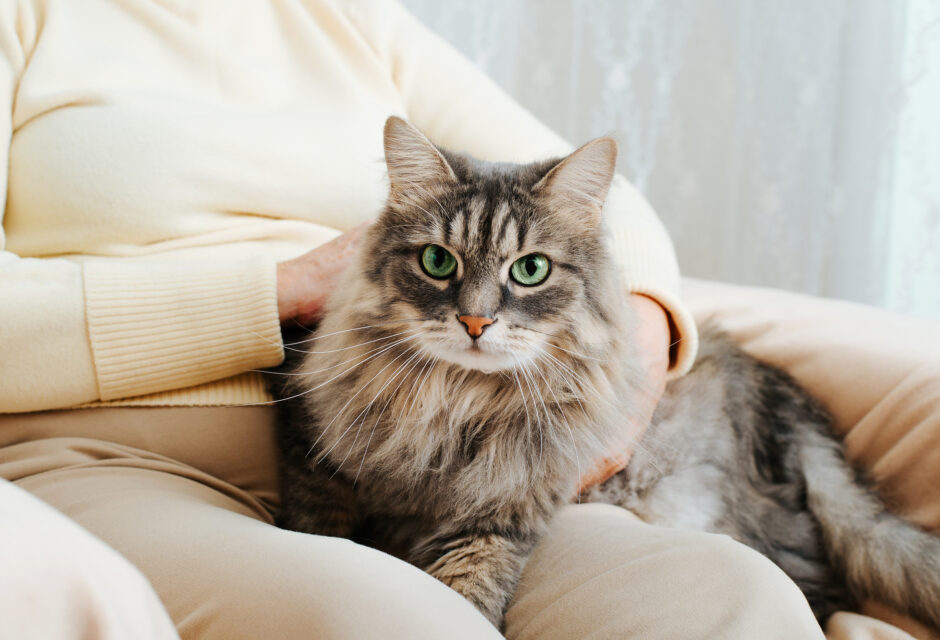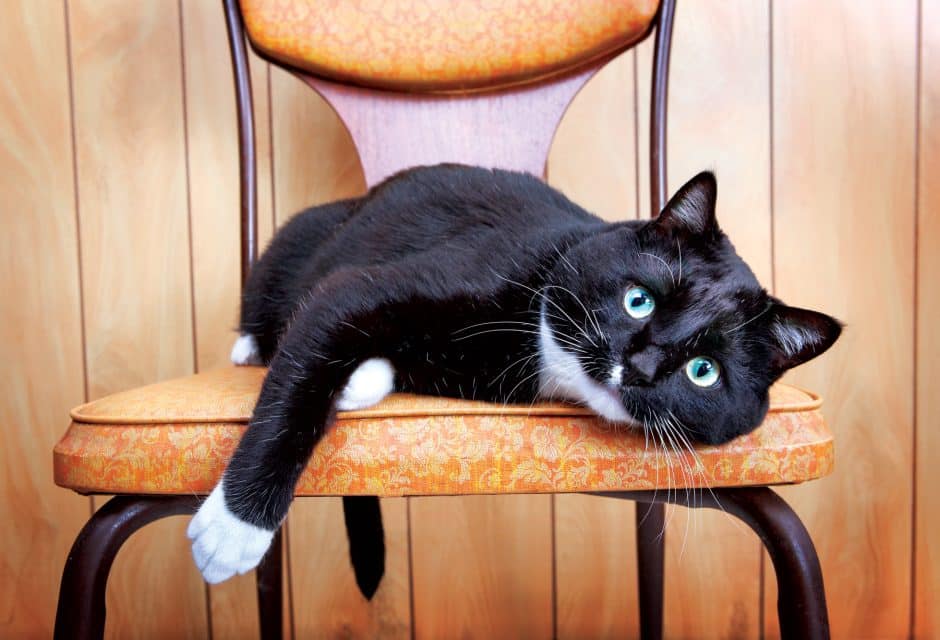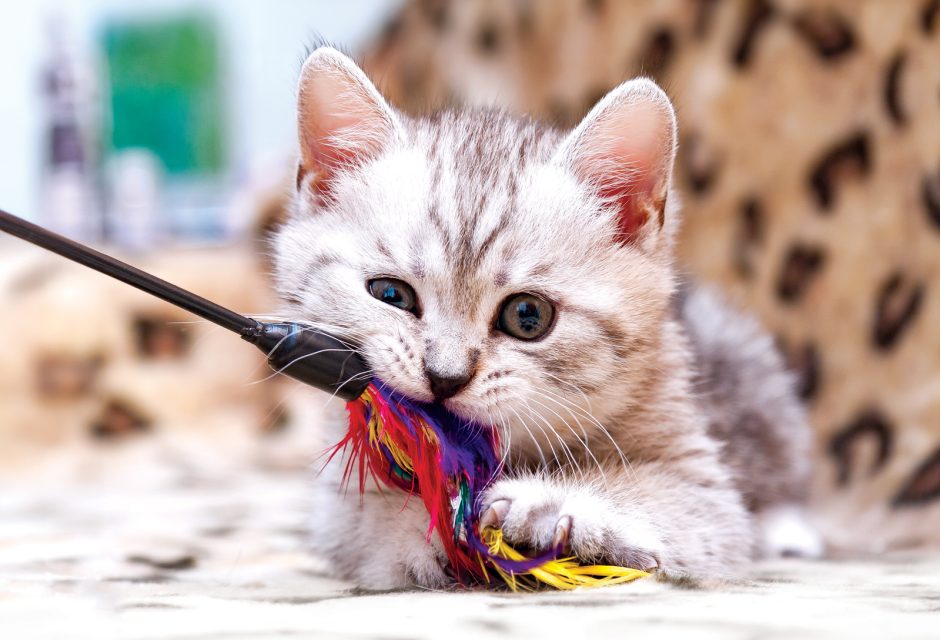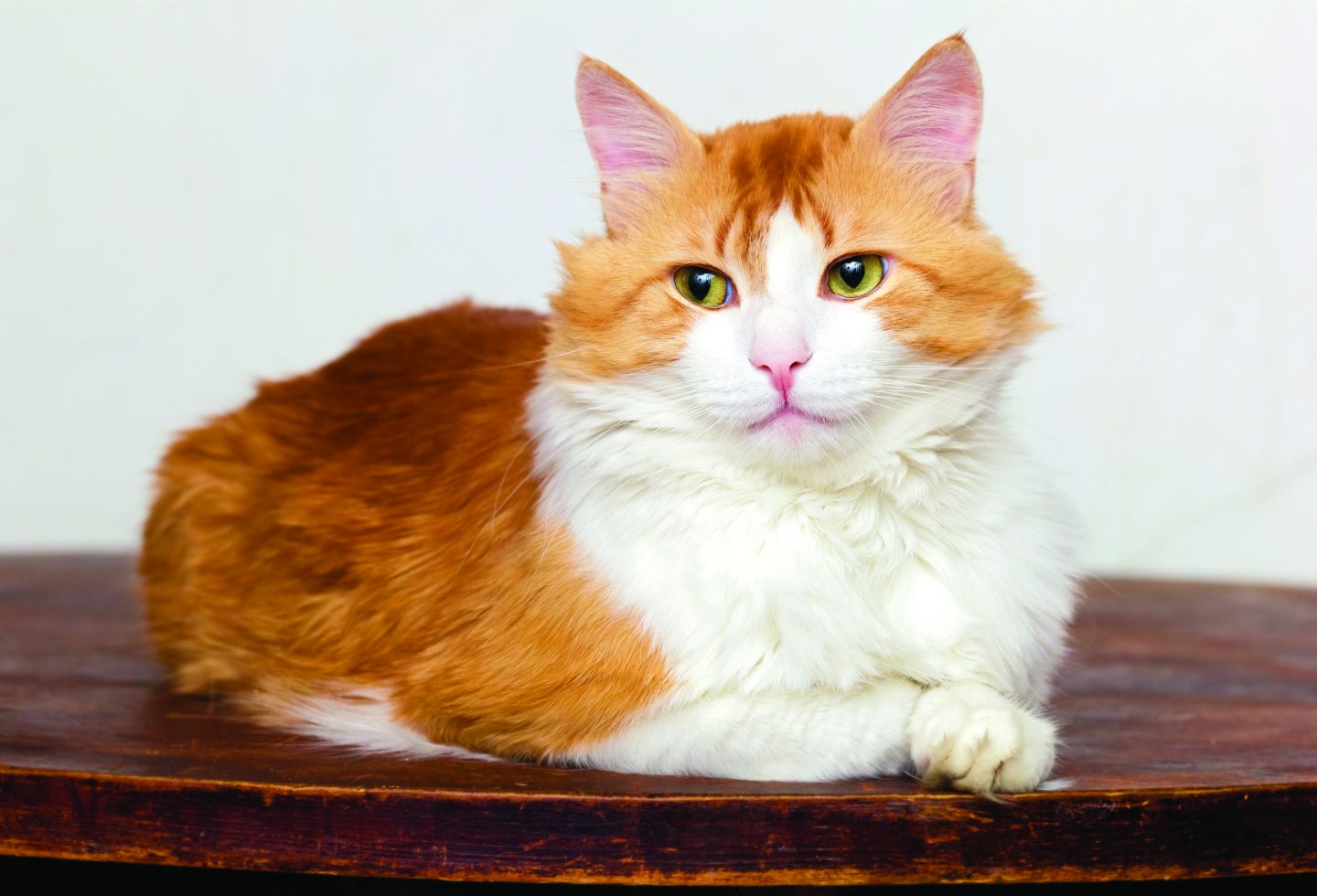
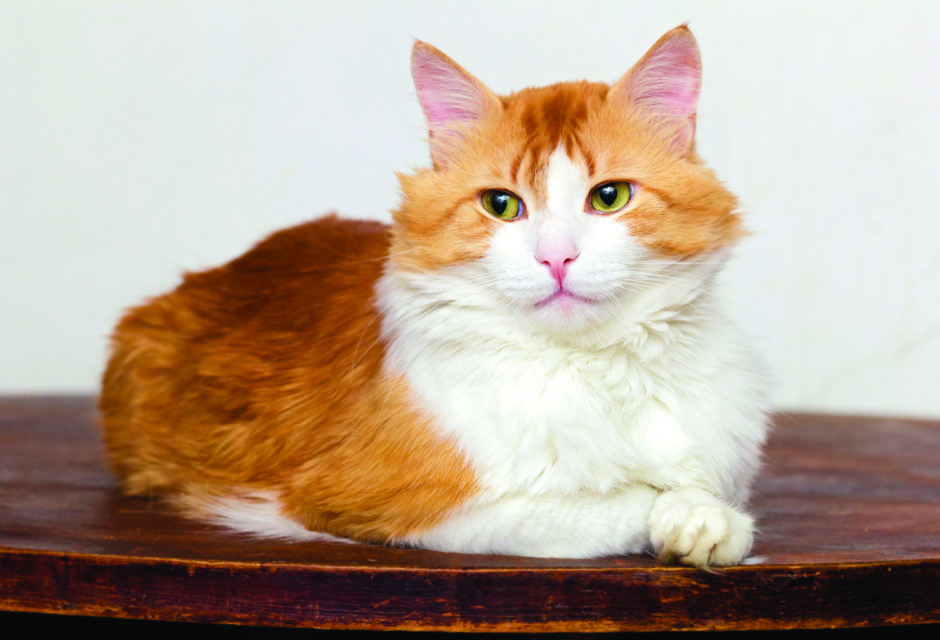
How Cats Think
Cat behaviour experts devoting themselves to how cats think and the emotions cats experience are helping to improve our relationships with our cats
If you’ve ever wondered what your cat was thinking as she gazes out the window, or why he sits on your newspaper when you’re trying to read, you’re in good company.
“I find that cat owners always want to know why cats do what they do,” says Mieshelle Nagelschneider, cat behaviourist and founder of The Cat Behavior Clinic in Portland, Oregon.
They’re curious for good reason—cats have long had a reputation for being aloof, self-reliant, and mysterious. They’ve been domesticated for thousands of years, yet still remain enigmatic to their human companions today. Enter cat behaviourists like Mieshelle and Pam Johnson-Bennett, a pioneer in the field of cat behaviour consulting. They’ve helped tens of thousands of cat owners around the world understand how cats think.
Ask both behaviourists and they’ll tell you that the need for people in their profession is there. Pam is the author of seven award-winning books on cat behaviour and training—dubbed the “cat bibles” of understanding felines—and one of the most sought-after cat behaviour experts in the world.
Nashville-based Pam began her consulting career in New York in 1982 back when there was no such thing as a cat behaviour consultant. “When I started it was lonely and I was ridiculed. Now the field is respected,” she says, “which is wonderful because many cats’ lives will be saved.”
In the past, cats were viewed as low-maintenance pets people either adopted on a whim or got because they didn’t have enough time to devote to a dog, says Pam. Cats were largely considered un-trainable, which is a false notion Pam has devoted her career to correcting.
Cats can be trained
“You can train them to do all the fun things that dogs do—fetch, roll over, give me your paw…cats are brilliant,” says Pam. “But first, you have to find out what the currency is for the cat. What motivates a cat is different from what motivates a dog.”
Cats and love
Comparing cat and dog behaviour is one of the mistakes that lead many people to believe that cats are not affectionate animals, that they don’t love us, or that they are aloof when the opposite is true. “Cats show their affection differently than dogs, and they show it in many different ways,” says Pam. “They butt their heads up against you or lay on the paper you are reading. They’ll go to where your focus is.”
One commonly misinterpreted sign is when a cat lays near you with its back to you, says Pam. “People get offended, but cats are predators, so they need to look out on their environment. They know you’re safe, so they can put their backs to you.”
Cats are both predator and prey, says Mieshelle, who has been working with cat owners around the world for 20 years. Her bestselling scientific and scholarly-cited cat behaviour book, The Cat Whisperer, has been published in multiple languages and is used by professionals around the world. “Because cats are both predator and prey, they are extra cautious and reactive. They don’t have a pack like dogs do for protection so they have to be more cautious,” she says. Growing up on a farm, Mieshelle spent a lot of time observing feral cats. “I had all these cats to watch their natural body language, moving freely, in nature where they are meant to be.” And although they aren’t pack animals, cats aren’t as solitary as many people think.
Social creatures
“They hunt alone—they are solitary eaters—but they are social animals,” says Pam. Still, that’s no guarantee that cats will get along when placed in a household with other cats. Just as not all humans get along, “cats may not be the best of friends if we made the pairing,” she says. How cats feel about dogs works on a case-by-case basis. “Dogs and cats don’t speak the same language,” says Pam. “Dogs play by chasing, but cats feel like they’re fighting for their lives.” Pet owners need to make sure all household pets feel safe, going at the pace of the one who is most stressed out, she says.
Loyalty
Once firmly established at home, cats are very loyal, says Pam, dispelling another myth that cats are not as loyal as their canine counterparts. We think a dog is more loyal because it follows us around, she says, “but cats are territorial, so they don’t want to go in the car with you or on vacation with you.” This desire to stay put is not an indication of a lack of attachment.
Anger and grudges
Force an unwilling cat into a situation and you may make him mad: cats do feel anger. “If a cat doesn’t feel that he has a choice, you have to take a step back,” says Pam. Humans may have the best intentions—“We see a gorgeous cat and lumber on over and pick the cat up without asking it”—but may end up cornering and offending the animal. Not all is lost, as cats don’t hold grudges or have punitive thoughts, says Pam. “Cats don’t plot ways to get even. Their behaviour is driven by result and we misunderstand the cats’ motivation for the behaviour” as retaliation.
Guilt
Nor do cats experience guilt.
That look you get when your cat pees on the floor and you bring the cat over and punish him isn’t guilt, it’s fear, says Pam. “It’s a miscommunication. The cat is terrified because it doesn’t know how to read you.” The cat only knows you’re angry and responds correspondingly by shying away, a gesture often interpreted as guilt.
Jealousy
Cats do get jealous, which goes back to territoriality. “Unlike dogs which have one alpha, cats have a flexible social hierarchy,” Mieshelle says. “They timeshare, or take turns owning important resource locations, like food locations and water locations in their environment.” Cats may feel jealous if they feel those resources to be scarce. To curb jealousy, Mieshelle suggests having multiple resource locations to make it easier for multiple cats to share.
Joy and sadness
Like humans, cats experience joy and sadness. Cats suffer from loneliness when they aren’t getting enough attention, says Pam. “A lot of people think cats are low-maintenance. “We come home from work and check our email and make dinner and don’t interact with the cat. The cat thinks, “why should I greet you if you’re not going to respond to me?’”
Cats are happy when they feel relaxed, when they’re eating, hunting, being groomed and getting attention, says Mieshelle. Providing interactive toys and puzzles and triggering your cat’s prey drive a couple of times a day will make for a joyful cat. “Cats in captivity get stressed from boredom,” she says.
Boredom is the last thing on a cat’s mind as it gazes out the window. As an ambush predator, the cat is lying in wait for something—a butterfly, a bird, or a squirrel—to come within ambush distance, says Pam. “That’s kitty TV. They look for stimulation and all the action is outside.” Keep in mind, though, as Mieshelle notes in her article for Modern Cat, “How to Stop Your Cat From Urine Spray-Marking,” (moderncat.com/spray-marking) a cat that can see a neighbourhood outdoor cat through the window may feel his territory is being threatened, which can lead to urine marking in your house.
Treating a Cat like a Cat
But as much as cats experience human-like emotions, owners should still treat them like animals in order to have a successful relationship with them. “Love your cat as a member of the family, but remember that they are cats and not fur-covered children,” says Pam.
For her part, Mieshelle thinks there might be more to cats than we think. “I like to think that cats are higher-thinking animals and they could be thinking more complex and interesting things than we could ever imagine,” she says.
Certainly, there’s much more left to discover. Even after more than three decades of working with cats, Pam keeps learning and finding more to write about. “That’s what’s fascinating about this field—cats aren’t giving up all their secrets.”
Make sure to keep kitty’s natural instincts sharp with these Modern Cat-approved enriching items!
Join the newsletter and never miss out on cat content again!
"*" indicates required fields
By clicking the arrow, you agree to our web Terms of Use and Privacy & Cookie Policy. Easy unsubscribe links are provided in every email.





